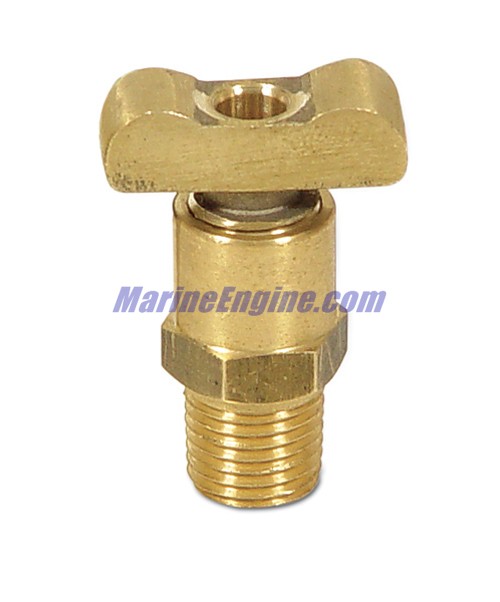I'm sure this will be a story of the week. I'm actually embarrassed to write about the events that took place yesterday while winterizing my boat this year. My boat is a 2004 Sea Ray Sundeck 220 SD and I've been winterizing it for years without an issue. However, this year was a disaster. My mind was definitely elsewhere that day and the chatty guy at the marina did help either. Anyway.....
1st.... During the winterizing process the block was drained using the single port drain system and muffs were connected to flush the salt water from the engine. Unfortunately the engine ran for approximately 1 minute (no longer) with the Single port drain system (blue valve) and the blue plug in the thermostat housing not installed. Water began to exit the bottom drain and out through the transoms drain plug. The engine did not overheat but did reach and engine temperature of approximately 180 degrees. Engine was shut down.
Next issue. After closing all the drains, a second attempt was made to flush the engine using the muffs. Apparently the muffs shifted off part of the intakes on the stern drive and the engine temperature rose while I was checking the muffs from the swim platform and the alarm went off. The engine was immediately shut down.
After recruiting a second pair of eyes I re-secured the muffs and flushed the salt water from the engine without incident. The engine ran for approximately 10 minutes and all gauges were reading normal.
I understand that running the overheating the engine even for short periods of time can cause damage but how concerned should I be????
Without a doubt I'm going to have the impeller in my stern drive changed, but is there any other things I should have my mechanic check for to make sure the engine & stern drive were not damaged so I can feel comfortable when I put the boat back in the water next season.
Thanks for your anticipated for everyone's help and advice. I fully expect some smart comments which I deserve, so be gentle I feel bad enough!!!!
Ceeg
1st.... During the winterizing process the block was drained using the single port drain system and muffs were connected to flush the salt water from the engine. Unfortunately the engine ran for approximately 1 minute (no longer) with the Single port drain system (blue valve) and the blue plug in the thermostat housing not installed. Water began to exit the bottom drain and out through the transoms drain plug. The engine did not overheat but did reach and engine temperature of approximately 180 degrees. Engine was shut down.
Next issue. After closing all the drains, a second attempt was made to flush the engine using the muffs. Apparently the muffs shifted off part of the intakes on the stern drive and the engine temperature rose while I was checking the muffs from the swim platform and the alarm went off. The engine was immediately shut down.
After recruiting a second pair of eyes I re-secured the muffs and flushed the salt water from the engine without incident. The engine ran for approximately 10 minutes and all gauges were reading normal.
I understand that running the overheating the engine even for short periods of time can cause damage but how concerned should I be????
Without a doubt I'm going to have the impeller in my stern drive changed, but is there any other things I should have my mechanic check for to make sure the engine & stern drive were not damaged so I can feel comfortable when I put the boat back in the water next season.
Thanks for your anticipated for everyone's help and advice. I fully expect some smart comments which I deserve, so be gentle I feel bad enough!!!!
Ceeg








